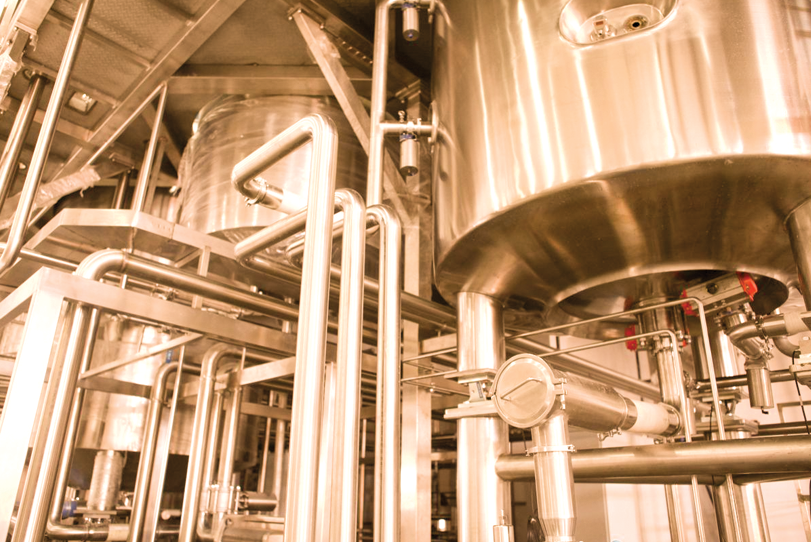Industry leaders discussing the domestic market trends in Indian refrigeration and cooling industry, whilst drafting ways to mould the industry with HFC and natural refrigeration.
In India, refrigeration has a highest aspirational value for overall consumer durable cooling and refrigeration goods. The refrigeration market has been rising at a growth rate of 15 percent per year, along with 8 percent increase consumer durable goods market. As many as 4.8 billion new units of cooling equipment will be sold globally between 2019 and 2030 and if this demand is not met sustainably, it may lead to a climate catastrophe.
Driving the domestic cooling refrigeration market
Domestic and residential cooling accounts for more than 60 per cent of overall demand placing the onus on real estate developers and households. However, demand is growing more quickly among commercial and industrial cooling users from hotels to data centre operators.
The report noted that cooling devices are a substantial and growing contributor to climate change as they contribute to emissions both directly and indirectly. However, the relative pace of growth will be faster elsewhere such as India and Indonesia, it noted. The market for cooling refrigeration and air conditioning is already substantial and is on a rapid growth trend owing to climate change, urbanisation and income growth.
Refrigeration scenario in India
There is a huge potential to increase the refrigeration market in India because the country has a gap on food preservation technology from the production to cold storage or supermarket, and reducing this gap has a great impact on avoiding food waste. Further, it has a big population and the majority of it is not using refrigeration at home or stores.
Esequias Pereira Junior, Sales senior Manager – Asia Pacific Region, Embraco takes note of the growing impetus on refrigeration industry and says that the country is among the world’s largest producers of fruits, vegetables, milk, meat, and seafood, and only 60 percent of the people have access to this production, since the food waste is calculated in around 40 percent. One of the reasons is the limited cold chain infrastructure.
“Therefore, we believe we may increase our participation in the domestic refrigeration market due to our portfolio. Our products have robustness and reliability and a high level of energy efficiency. The differentiation for Indian domestic market is to offer a portfolio which works with any voltage fluctuation and delivers great cooling capacity with low power consumption”, Pereira adds.
According to Aditya Mittal, COO, Mittal Refrigeration, India’s refrigeration has been gaining momentum with time and impending demand for cold storage requirement for long-haul transit for perishable and non-perishable items. Good but, the essential part is implementing them right from initial stages, starting from designing and installation when you install an air-conditioner, refrigerator or a cold storage. Initially, after installation, the copper tubing should be vacuumed properly; deep vacuum is very important. Charging the right refrigerant by weight and side by side, using the proper heavy gauge copper tubes, proper brazing alloys, proper insulation, etc. are very important. Later on, when you talk of the service practices, bi-annual maintenance is very important. So, bi-annually the cold storage or air-conditioner, heat exchangers, condensers, and cooling coils should be cleaned; wet service is the correct way of cleaning them. This is mandatory procedure, but people do not do it. And you should be getting it done through a qualified technician or engineer. If the heat exchangers are cleaned properly, then there will be less load on your compressor and simultaneously you will be saving more energy.
Whereas, Mihir Sanghvi, President, ISHRAE – Mumbai chapter, talks about the various aspects being presented in the cooling industry along with various capacities that has been amidst the key drivers for the cooling and refrigeration demand. He says, Earlier, the cooling equipment, an air-conditioner or refrigeration and refrigerators contained limited capacity, whereas, today considering the increase in demands from the industrial and consumer side. For e.g.; earlier, air-conditioner with a capacity of 1 ton, was designed to cover an approximate area of 50 sq.ft, but today we are working on projects where, air-conditioners with same capacity, covers and amplified area of 800 sq.ft. The same goes with refrigeration. The increasing technology being availed and implemented in the units has been. This is highly evident, that people desire technologically advanced systems rather than the old and high energy consumption systems.
Environmental impact of HFO’s (natural refrigerants)
HFOs have a relative low flammability, due to higher cost and thermodynamics characteristics, Embraco believes that hydrocarbons, such as Propane R290 and R600a, represent the best solution for light commercial and household refrigeration applications both in low and medium pressure for the Indian market.
They have low GWP (Global Warming Potential) index and their contribution to climate change is negligible. In addition to that, moving to natural refrigerants not only helps with compliance to future regulation standards, for being environmentally friendly, but also increases energy efficiency, helping to reduce energy consumption and, as a consequence, reducing long term costs.
Pereira highlights that they are pioneers in HFOs with the highest efficiency for light commercial. These refrigerants have been widely used in some countries like Japan, and there we have a leading position. “Embraco, which is now a part of Nidec Global Appliance division, has a 25 years history of pioneering in the study and use of natural refrigerants for its solutions. We believe that these fluids – especially hydrocarbons – are the ideal solution for the future of refrigeration, aligning economic and environmental needs.”
Mittal says “I think HFC’s is totally new technology bypassing the air conditioning / refrigeration cycle has not yet happened. But yes, new alternative refrigerants have come out. When you charge these refrigerants in your air-conditioners, even if these refrigerants go out in the atmosphere they cause much less harm to our climate, almost negligible than the ones which are currently used. So, with the coming of new refrigerants, new compressors are required, new and more robust air-conditioners are required which turns out to be very expensive in the market.”
Refrigeration practices
Earlier, maintenance of a cooling unit required multiple people, but that’s not how things are operated today things are at ease and most of the advancements have been become more energy efficient. Government is making taking all possible conscious efforts by adding up BEE ratings, which has decreased the previous 5 star ratings to 3 stars and less than that too. “We must appreciate that this is the first government to have introduced a national cooling plan, and is expecting 8 times on the growth in HVAC&R field in the coming two decades. And the existing players cannot cater to this exceptional growth, as it would require more people to meet the needs of the industrial growth, and societies like ISHRAE and others, come into the picture where it unifies the youth in the purview, and teach them innovations, bring in new ideas, that will cater to greater needs in future. We must have some innovations to give back to the society” adds Sanghvi.
These things are very important and good tools and equipment is very important which unfortunately are not used in our trade. Refrigerant is a chemical or gas and people do not use a leak detector to find the leakage. Some people do not know about leak detectors and some don’t want to spend money on it. Another practice is using recovery machine. If you are moving your air-conditioner or cold storage and does not want the gas to be left out in the environment and if leaked should be sucked back and stored in a cylinder, for that a recovery machine is required. Just like leak detectors, people do not invest in a recovery machines. The mind set has to be changed. Such good service practices are required in our trade.
Aiming at embracing the environment, by reducing the energy consumption, and preserving it for the future generation, this initiative will let the people live a habitat, even when the cooling is a little more that the body temperature, yet comfortable.
Future potentials
The manufacturing sector and entrepreneurs are the key contributors to the national GDP. It’s the industry’s one of the primary responsibility to upgrade the available technologies with the newer ones, further make them easy to access.
Esequias Pereira Junior, Sales senior Manager for Asia Pacific Region We see very good prospects in the Indian commercial refrigeration market due to the necessity of a more robust cold chain infrastructure in the country, to avoid food waste and improve people’s access to well preserved food. Embraco believes that the country has a huge potential to improve it and is able to support the further development of the whole system.
We have a complete portfolio for each type of use in the cold chain, from food storage, milk market, restaurants and bakeries to merchandisers and convenience stores or markets. In addition to that, we offer products that are appropriate to maintain refrigerators working at full potential despite any energy fluctuations. To be able to capture this moment of growth in this market, we have reinforced our business in India through a very capable local technical support, quality and sales teams, partnerships with local laboratories as well as providing training to customers about our innovations.
Among the main market trends in the refrigeration sector worldwide, we highlight energy-efficiency, food preservation, better acoustic solutions and sustainability. Certainly, variable speed solutions combined with natural refrigerants are the ones which best fit such drivers.
Refrigeration fluids especially hydrocarbons are the ideal solution for the future of refrigeration, aligning economic and environmental needs.
Esequias Pereira Junior, Sales senior Manager – Asia Pacific Region, Embraco
Even if these natural refrigerants go out in the atmosphere they cause much less harm to our climate, almost negligible than the ones which are currently used.
Aditya Mittal, COO, Mittal Refrigeration
Demand for efficient refrigeration is highly evident that people desire technologically advanced systems rather than the old and high energy consumption systems.
Mihir Sanghvi, President, ISHRAE Mumbai Chapter
Cookie Consent
We use cookies to personalize your experience. By continuing to visit this website you agree to our Terms & Conditions, Privacy Policy and Cookie Policy.















